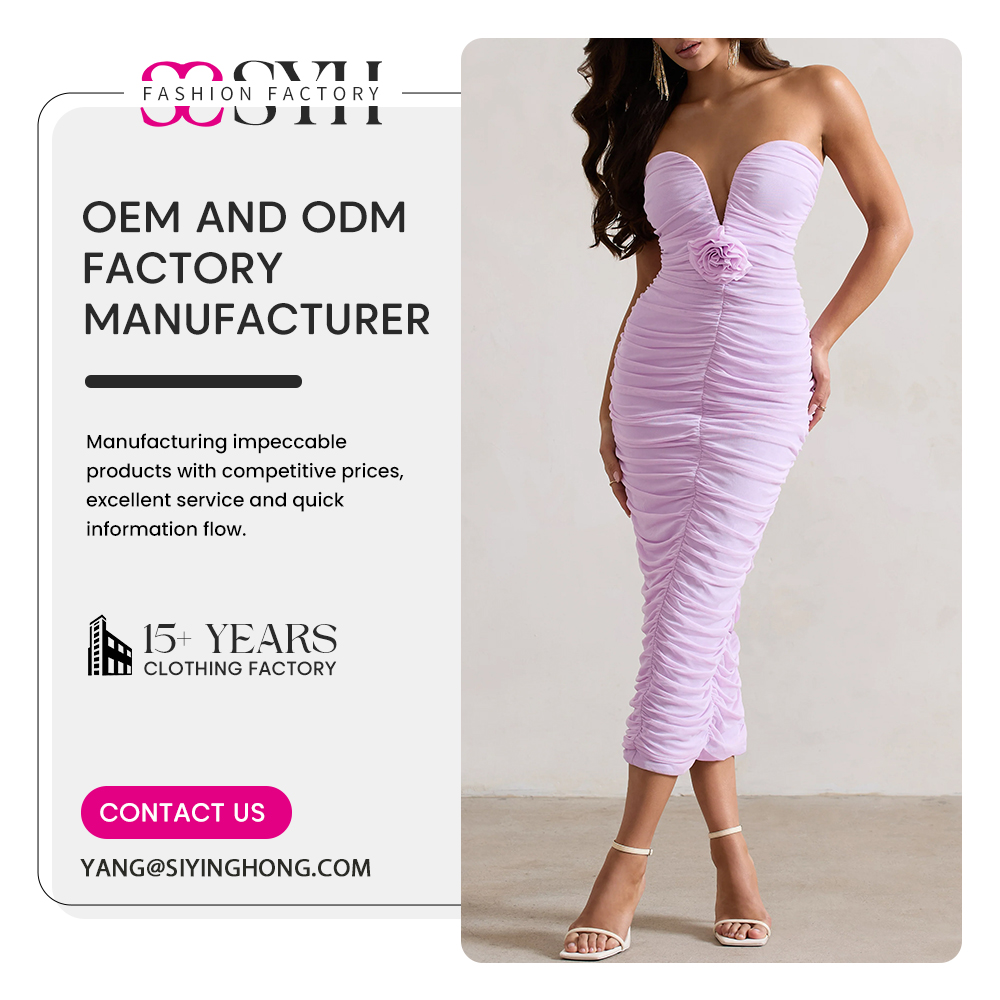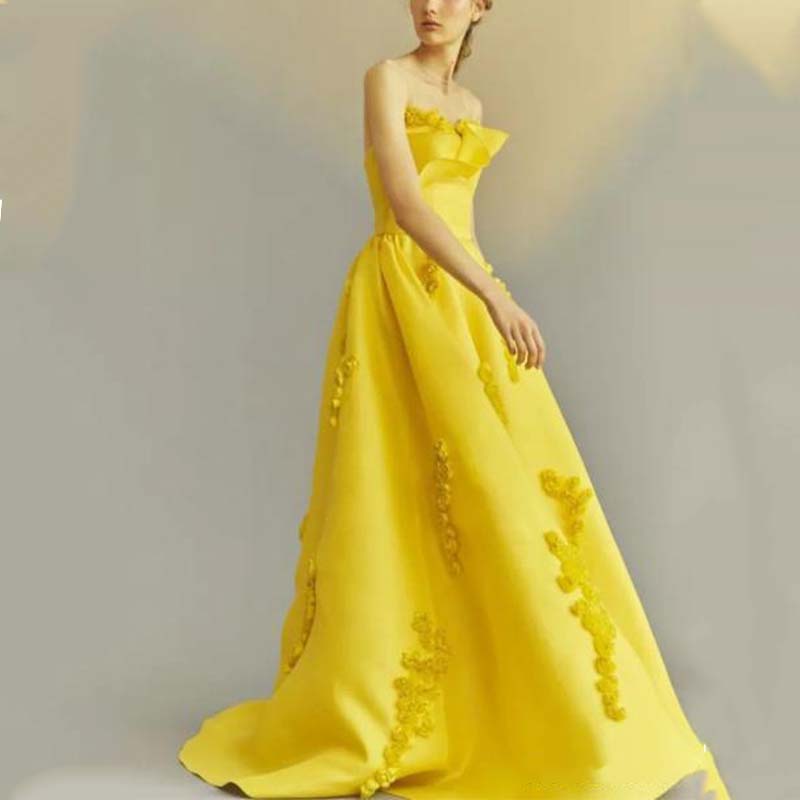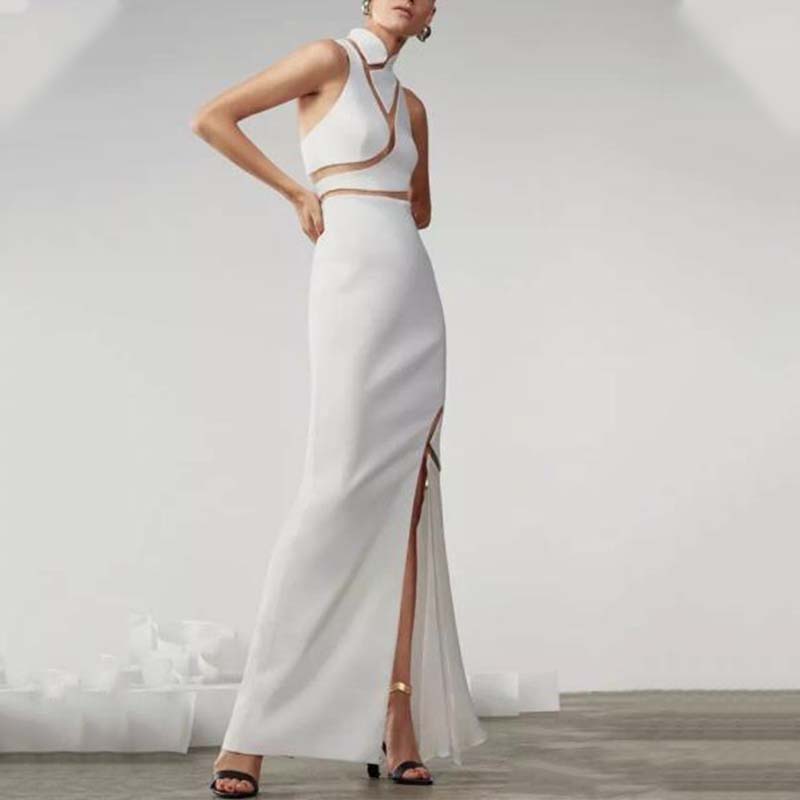A dress is a type of clothing that connects the upper garment and the lower skirt. It is the ideal choice for most women in spring and summer. The long, floor-length dress was once the main skirt accessory for women both at home and abroad before the 20th century, embodying the classical feminine virtue of not showing feet when walking or teeth when smiling. At the beginning of the 20th century, as women increasingly stepped out of their homes and into society, the length of skirts gradually became shorter, giving rise to the image of modern dresses. Floor-length dresses were often used in wedding gowns and evening gowns.
1.The structural design of the dress
(1) Changes in the specific styles of the dress
1) Divided by outline:
●H-shaped (vertical lift type) :
Also known as box-shaped, it has a simple shape, is relatively loose, and does not emphasize the curves of the human body. It is often used in sporty and military-style dresses and has a wide range of applications. It is also known as the "universal dress style".
●X-shaped (cinched waist type) :
The upper body fits the human body closely, with a flared waistline below. It is a classic style in dresses, highlighting the elegant curves of a woman's prominent chest and slender waist. It is deeply loved by ladies and is often used in wedding gowns.
●A-shaped (trapezoidal) :
Shoulder width swing, naturally incorporating the horn volume from the chest to the bottom, presenting an overall trapezoidal shape. It is A classic silhouette that conceals poor body shape. The overall outline gives people a natural and elegant feeling.
●V-shaped (inverted trapezoid) :
Wide shoulders and narrow hem. The hem gradually Narrows from the shoulders to the bottom, and the overall contour is an inverted trapezoid. It is suitable for people with broad shoulders and narrow hips. It is often used with epaulets to make the shoulders look flat and firm.
2) Divided by the waist dividing line:
According to the dividing line of the waist, it can be divided into two major categories: the split-waist type and the continuous waist type.
●Waist-joined type:
The style where the garment and skirt are joined together by seams. There are low-waist type, high-waist type, standard type and Yukon type.
●Standard type:
The seam line is at the thinnest position of the human waist. The so-called "mid-waist dress" in the clothing industry is suitable for women of all levels to wear.
●High-waisted type:
The seam line is above the normal waistline and below the chest. Most of the shapes are flared and wide.
●Low-waist type:
The seam line is above the hip line and below the normal waist line, with a flared skirt and pleated design.
●Yukon type:
The seam line is on the shoulder above the chest and back.
●One-waist-length type:
A one-piece one-waist-length skirt with the dress and skirt connected without seams. The main types include close-fitting, princess style, long shirt style and tent style.
●Close-fitting type:
A dress with the body connected and the waist cinched. The side stitching of the skirt is a naturally falling straight line.
●Princess line:
By using the longitudinal division of the princess line from the shoulder to the hem, it highlights the curvaceous beauty of women, is easy to fit the clothing, emphasizes a cinched waist and wide hem, and is easy to create the desired shape and three-dimensional effect.
●The line on the back of the knife:
By using the vertical dividing line from the sleeve hole to the hem, the curvaceous beauty of women is highlighted.
2) Classified by sleeves:
Sleeve lengths: Halter, sleeveless, short-sleeved and long-sleeved dresses.
Sleeve styles: pleated shoulder sleeves, lantern sleeves, flared sleeves, tulip sleeves, sheepleg sleeves and other dresses.
2. Knowledge about the fabric and accessories of dresses
The fabric of the dress is very versatile, ranging from light silk to medium-thick woolen fabric. Dresses are common clothing for women in spring and summer, mainly made of light and thin fabrics. The fabric, which is light, thin, soft and smooth, has strong breathability. It feels light and cool when worn and is a commonly used material for spring and summer dresses.
The preferred fabric for dresses is the luxurious silk fabric, followed by the simple cotton fabric, linen fabric, various blended fabrics and lace fabric, etc. All kinds of silk possess the above-mentioned characteristics. Among them, the breathability of silk double crepe is ten times that of woolen fabric and silk, making it an ideal fabric for summer. Women's dresses made of various silk printed fabrics are both cool and can showcase the graceful lines of women.
When choosing fabrics for spring and summer, it is also necessary to consider their moisture-absorbing and sweat-absorbing functions. Pure cotton fabrics have relatively good water absorption and are washable and durable. At present, some chemical fibers and blends also possess this property. Among them, the water absorption capacity of fiber-rich fabrics even exceeds that of pure cotton fabrics. However, from the perspective of fashion trends, pure cotton fabrics will still be highly favored. Therefore, nowadays people prefer more natural and simple things. Returning to nature will become a popular theme.
3. The color and detailed design of the dress
Crossshoulder collar and design: By cutting, the crossshoulder is made into an exaggerated decorative shape, and the three-dimensional cutting technique is used to change the other structural shape of the crossshoulder, highlighting the feminine sexiness and elegance.
(1)Classic V-neck design:
The large V-neck design is a very common technique in formal wear. Its long-lasting use is sufficient to prove its status in the formal wear world. The well-tailored large V-neck can very well highlight a person's temperament/sexiness and elegance.

(2)The design of the chest collar:
By using the three-dimensional cutting method, the stiffness of the fabric is utilized to create ruffles and irregular edge treatments on the chest. The technique of pleating to create a three-dimensional effect on the chest will become one of the popular trends.

(3)Side-slit skirt:
Side-slit skirts are also a common element in dress design. Techniques such as styling cuts, ruffles, lace patchwork, and three-dimensional floral decorations at the slit are all popular.
(4)Irregular skirt hem:
By using three-dimensional cutting techniques, with pleats and a contraction on one side of the waist, an asymmetrical skirt hem design is presented. The application of this cutting technique has become a frequent guest at various fashion shows.

(5)Cutting and patchwork:
The mechanical cutting technique presents a tough look in the dress style. The use of see-through chiffon patchwork fully showcases the sexiness of women
Post time: May-08-2025






